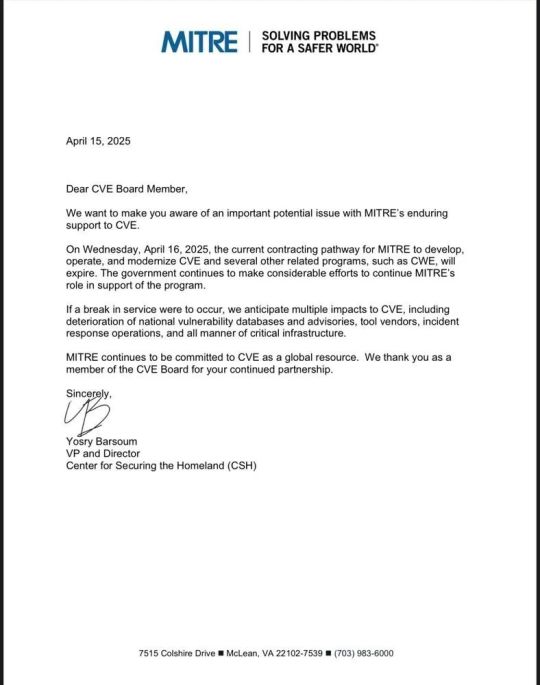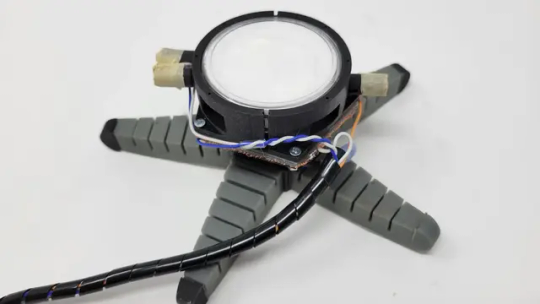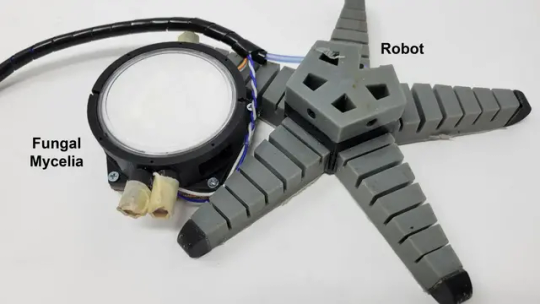Don't wanna be here? Send us removal request.
Text
CL1: The Biological Computer That Plays Pong with Actual Brain Cells


Greetings folks! Strap in, because this one's not science fiction — it’s science right now. What you’re about to read involves a computer that thinks using actual, living brain cells. Cortical Labs has built a system that doesn’t just simulate intelligence — it is intelligence. Meet CL1: a hybrid of silicon, stem cells, and sheer bioengineering brilliance.
TL;DR:
Cortical Labs built a biological computer using living neurons from stem cells. These neurons live on a chip, respond to stimuli, and learn to play Pong through feedback. No lines of code needed — just raw, biological learning. It’s a new chapter in computing where machines grow brains instead of running on silicon alone.
🧠 So, What Is CL1?
Imagine this: you take living neurons — derived from either human or mouse induced pluripotent stem cells (iPSCs) — and grow them on top of a microchip covered in electrodes. These electrodes can talk to the neurons using electrical pulses.
Now give that system a goal — say, playing Pong — and watch what happens. With no pre-programming, these little neuron networks start to learn, just by reacting to inputs and adjusting over time.
This isn't a simulation. These are real cells doing real-time problem solving. Welcome to the era of wetware.
⚙️ CL1's Technical Side:
Neurons: Human/mouse neurons derived from iPSCs
Interface: Multi-Electrode Array (MEA)
OS: biOS (as base biological operating system)
Feedback Loop: Electrical stimulation + live response tracking
Learning Mechanism: Hebbian plasticity ("neurons that fire together wire together")
🧬 How the Heck Does This Actually Work?

Let’s break it down — both biologically and technically:
👾 The Digital-to-Bio Feedback Loop:
CL1 is a closed-loop system:
The digital system tells the neurons what's happening (e.g., “pong ball moving left”)
Neurons fire back electrical responses
The system interprets those firings
Correct response? They get rewarded. Wrong one? They get a gentle digital slap
Over time, the neuron network self-organizes, learning the task through synaptic plasticity
🧪 The Biology Bit:
The neurons are grown from induced pluripotent stem cells (iPSCs) — adult cells reprogrammed into a stem-cell-like state
These are then developed into cortical neurons
The network grows on a multi-electrode array that can both stimulate and read from the cells
🖥 The Tech Stack:
biOS (Biological Operating System): Simulates digital environments (like Pong) and interprets neural activity in real time
Signal Processing Engine: Converts biological signals into digital responses
Environmental Control: Keeps the neuron dish alive with precise nutrient feeds, CO₂ levels, and temperature management
💡 Why This Is a Huge Freaking Deal
This isn't about playing Pong. It’s about building a new class of machines that learn like we do. That adapt. That grow. This rewires the concept of computing from algorithm-based logic to biological self-organization.
Potential future uses:
Ultra-low-power, self-learning bio-AI chips
Medical models for brain diseases, drug testing, or trauma simulation
Robotic systems that use real neurons for adaptive control
In short: this is the birth of organic computing.
🔮 Can We Upload Knowledge Yet? Like Matrix Style?
Not quite. Right now, CL1 learns via real-time feedback — it’s still trial-and-error. But researchers are exploring:
Pre-conditioning neural responses
Chemical memory injection
Patterned stimulation to train in behaviors
In the future? We might literally write instincts into neural systems like flashing a bootloader. One day, your drone might come preloaded with lizard-brain reflexes — not software, but neurons.
🧱 What Comes Next?
We’re at the beginning of something radical:
Neural prosthetics with muscle memory
Bio-computers that can evolve new solutions on their own
Robots that aren’t just “smart” — they’re alive-ish
CL1 is laying the foundation for a new kind of intelligence — not modeled after the brain, but actually made of one.
🔗 Sources:
Cortical Labs Official
Nature Article
The Verge Feature
ABC Science News
MIT Tech Review
Neuron Journal Study
#CL1#BiologicalComputing#Neurotech#CorticalLabs#LivingAI#iPSC#BrainComputerInterface#SyntheticBiology#Wetware#Futurism#BioAI#StemCells#Neuroscience#NextGenComputing#MEAtechnology#HumanNeuronAI#Biocomputing#TechFutures#PostSiliconEra#PongBrain#cyberpunk#technology
1 note
·
View note
Text
OH! Im ok btw :)

Hey.. I know.. this break might've taken a little longer this time, but I’m fine—even with all the pressure and the government’s constant attempts at oppression.
Thing is, our government is run by far—and I mean FAR—right extremists. Over the past two decades, it hasn’t just been mismanagement; it’s been a systematic attempt to erase the Turk identity from Turkey. We’re being turned into something we’re not—something that doesn’t belong to this land or our roots. It’s not about faith, it's about control. And they're doing it in the name of “tradition” and “values,” while looting the country dry.
We’ve seen budgets after budgets redirected to these tarikats, cult-like religious groups, many of which wouldn’t even survive without constant state handouts. And what do they do? Lavish lifestyles, Arabesque palaces, $500K watches on wrists that never lifted a callus. Meanwhile, doctors, engineers, and teachers are either leaving the country or stuck surviving on scraps. Universities are hollowed out. The media’s a puppet show. And the judiciary? A cruel joke.
They've weaponized poverty, ignorance. corrupt the bureaucracy, education systems, media and religion to build their voter base—people trapped in survival mode don’t have the energy to fight back. And when someone does speak out? They're labeled a traitor, a terrorist, or worse.
But despite all that, I’m still here. We’re still here. That Turkic fire they’re trying to smother—it’s not going anywhere. You can't erase a people’s identity with propaganda and concrete mosques. They may control the institutions, but they’ll never truly own the streets, the minds, or the hearts of those who still believe in a secular, free, and modern Turkey
And for a final note, thanks to everyone who stands with us <3
We will not give up from our lands!
2 notes
·
View notes
Text
First AI Driven Lawyers and now AI JUDGES?

Greetings folks, Arabs being arabs whatever they put themselves in to... Now UAE is experimenting on use of ai to moderate court paperwork to "begin using artificial intelligence to help write its laws"
Yeah... Tell me its going to fail without telling me its going to fail..
So basically, "The Mighty", "The Home of High Tech" and "The Hivemind of IDIOTS" at UAE recently announced plans to use AI to help draft and update laws — a move Sheikh Mohammed bin Rashid Al Maktoum called a way to “accelerate legislation by up to 70%.” On the surface, it sounds like the future of governance: fast, efficient, data-driven. But before you picture AI as the legal equivalent of Harvey Specter, drafting flawless laws with a snap of its fingers, let’s take a closer look.
Why AI in lawmaking is not just a cool tech upgrade
Laws aren’t lines of code or simple contracts. They’re living frameworks shaped by human values, ethical debates, political horse-trading, and complex societal needs. AI, despite its strengths, faces big challenges here.
Bruce Schneier laid it out clearly:
“AI-generated law is not a first, and it’s not necessarily terrible, but it’s emblematic of a wider trend. The real danger isn’t AI making mistakes—humans do that too—but that AI gives those in power new, powerful tools to entrench their interests.”
The risks under the hood
Bias baked in. AI learns from existing data. If that data carries societal biases, AI replicates and amplifies them. Schneier points out, “Algorithms are only as fair as the data we feed them.” This means AI could unknowingly draft laws that deepen inequality or marginalize vulnerable groups.
Opaque decision-making. AI’s inner workings are often a “black box.” How it arrives at a suggestion or a draft isn’t always clear. Schneier warns, “When we can’t understand how a system makes decisions, we lose accountability.” Transparency is vital in lawmaking — people need to trust how laws come to be.
Oversimplification of complexity. AI reduces messy social realities to data points and patterns. But laws impact people’s lives in unpredictable, emotional, and nuanced ways. As Schneier puts it, “Security and privacy are social as well as technical problems, and algorithms don’t always get the social context.” The same applies to law.
The accountability gap. Who’s responsible if AI-crafted laws harm citizens? Unlike a human lawyer or legislator who can be held accountable, AI is a tool—no legal personhood. Schneier stresses the need for “clear accountability mechanisms before deploying AI in critical governance roles.”
A Side Story If You Will: The AI lawyer flop
There was that infamous case where an AI was used to draft legal contracts but ended up producing flawed, inconsistent documents—missing critical clauses and creating legal landmines. It was a stark reminder: AI can assist, but it can’t replace human legal judgment anytime soon. The stakes in lawmaking are way too high for rookie mistakes.
The UAE’s AI law initiative: a double-edged sword?
Schneier’s full take highlights the UAE’s $3 billion plan to become an “AI-native” government. It’s ambitious and far-reaching. But, crucially, the UAE is a federation of monarchies with limited political rights and a history of centralized power.
Schneier notes:
“AI’s capability to write complex laws can be exploited to embed policy preferences subtly, carving out ‘microlegislation’ loopholes that favor the powerful—something political scientist Amy McKay warns about.”
In other words, AI could become a sophisticated tool for power concentration, not democratization.
What about speed?
While speeding up lawmaking sounds great, Schneier cautions:
“Drafting isn’t the bottleneck. Humans still need to debate, amend, and agree on laws. The political horse-trading doesn’t get faster just because AI drafts faster.”
The hopeful side: AI for public engagement
AI can be a force for good in lawmaking if used to enhance transparency and public participation. Schneier points to experiments worldwide—like in Kentucky, Massachusetts, France, and Taiwan—where AI-powered platforms help governments listen better to constituents and build more inclusive policies.
For the UAE, the challenge is clear:
“If you’re building an AI-native government, do it to empower people, not just machines.”
Final take
Dont get me wrong AI is a powerful tool with enormous potential—but in lawmaking... it’s just that: a tool. It’s not the final arbiter. Until AI can be made transparent, fair, and accountable, human judgment, empathy, and oversight remain irreplaceable.
Think of AI like the eager associate on a legal team—great at research and support, but the partners (humans) must still make the tough calls. Skip that, and you risk creating a legal mess that no closer, even Harvey Specter or otherwise, can fix.
SOURCES:
Bruce Schneier, AI-Generated Law — Full article (2025.05.15) https://www.schneier.com/blog/archives/2025/05/ai-generated-law.html
Amy McKay on Microlegislation (cited in Schneier’s article) — Political Science perspectives on AI and law loopholes (search scholarly articles or summaries)
UAE’s announcement of AI use in lawmaking (news coverage example) https://www.thenationalnews.com/uae/government/2025/04/15/uae-launches-ai-to-help-write-laws/
Ohio AI regulatory revision success story https://www.governing.com/next/ohio-uses-ai-to-trim-unnecessary-laws.html
#AIinLaw#ArtificialIntelligence#AIGovernance#LegalTech#LawAndTech#CyberSecurity#BruceSchneier#TechEthics#AIrisks#DigitalGovernance#LawReform#AIAccountability#GovernanceInnovation#FutureOfLaw#TechPolicy#Transparency#BiasInAI#PowerAndTechnology#SuitsVibes#UAEtech#SmartGovernance
1 note
·
View note
Text

Greetings folks! Why whenever i take a break from internet there is another catastrophe happens? No really... Fırst COVID then Crowdstrike and now literally SHUTDOWN OF THE ENTİRE CVE PROJECT!!!
I know i know its more of a backend IT thing but also it WİLL EFFECT as user! So let’s unpack what really happened and why it matters shall we?
So, CVE — or Common Vulnerabilities and Exposures — is basically the universal naming system for software bugs. It’s what lets security pros, software vendors, and even governments speak the same language about security holes. Every time a new vulnerability is found, it gets a CVE ID, like CVE-2025-12345, so everyone knows exactly what they’re talking about.
Sounds stable, right? Well, in April 2025, the organization that runs CVE, MITRE, hit a major funding snag. Their government contract expired and for a while, no new money came through. Result? For several weeks, no new CVEs were assigned. Vulnerabilities piled up without official names, and everyone scrambling to keep up got left hanging. (bkz..)

This might sound like an administrative mess, but the consequences were pretty serious. Without timely CVEs, EDR vendors and vulnerability scanners couldn’t update their detection rules properly. Threat intel feeds stalled. Some researchers even held back disclosures because they couldn’t get official CVE numbers assigned.
And of course, attackers noticed. They started exploiting those untracked vulnerabilities, quietly, while defenders had no clear radar.
What did the community do? The response was actually impressive. Security teams stopped relying solely on CVEs and started pulling data from other sources like VulDB, GitHub advisories, and the CISA Known Exploited Vulnerabilities list. Some vendors rewrote their pipelines to focus more on behavior analytics and heuristics instead of just signature-based detection.
Meanwhile, the CVE program itself got a last-minute contract extension — but just a temporary fix. MITRE signaled plans to move CVE governance to a nonprofit foundation to make it less dependent on government whims. Whether that’s enough to prevent future disruptions remains to be seen.
Even the security guru Bruce Schneier summed it up well, calling the whole mess a wake-up call about how fragile our digital infrastructure really is when it depends on a single, centralized system.
So, the shutdown wasn’t just a bureaucratic hiccup — it forced the entire industry to rethink how vulnerabilities are tracked and how defenses are built. It accelerated a shift towards more decentralized, resilient, and behavior-focused security models.
And that, folks, is why keeping an eye on just CVEs won’t cut it anymore.
That’s it for today — until next time, stay curious and stay secure.
And.. see you in next one :P
Sources:
https://industrialcyber.co/threat-landscape/mitre-warns-of-potential-cybersecurity-disruptions-as-us-government-funding-for-cve-cwe-programs-set-to-expire/
https://www.infosecurity-magazine.com/news/cisa-cve-program-mitre-contract/
https://www.schneier.com/blog/archives/2025/04/cve-program-almost-unfunded.html
https://thehackernews.com/2025/04/us-govt-funding-for-mitres-cve-ends.html
https://www.nextgov.com/cybersecurity/2025/04/cisa-extends-mitre-backed-cve-contract-hours-its-lapse/404601/
https://cyberscoop.com/cve-program-funding-crisis-cve-foundation-mitre/
Wired https://www.wired.com/story/cve-program-cisa-funding-chaos
https://www.theverge.com/news/649314/cve-mitre-funding-vulnerabilities-exposures-funding
#Cybersecurity#CVE#VulnerabilityManagement#EDR#Infosec#ThreatIntel#CyberDefense#ZeroDay#SecurityOperations#VulnerabilityDisclosure#CyberResilience#CyberThreats#SecurityResearch#DigitalInfrastructure#MITRE#OpenSourceSecurity#BugBounty#SecurityCommunity#TechNews#SecurityAwareness#InfoSecCommunity
1 note
·
View note
Text

Greetings folks! Did somebody say fungus bots? its time to spore some trouble i guess :) ok it wasnt funny i get it.. Anyways meet with new fungus based biohybrid bot..
youtube
before i start to explain how its works lets take a look at its backstory shall we?
The idea was almost age old actually, experimentation of soft body robotics and bio robotics and today its reshape as we see biohybrid robotics with the search for more sustainable, self-healing, and biodegradable materials. Traditional robots are often made from synthetic materials and metals, which can be rigid, non-biodegradable, and challenging to repair. The researchers at Cornell University sought to overcome these limitations by integrating biological elements into robotic systems.
The team turned to mycelium, the root-like structure of fungi, which has the unique ability to grow, self-repair, and biodegrade. Mycelium is also known for its strength and flexibility, making it an ideal candidate for use in soft robotics. By embedding mycelium within a network of sensors and actuators, the researchers created a biohybrid bot capable of sensing its environment and responding to stimuli, all while being environmentally friendly.
This fungus bot represents a significant step towards more sustainable robotics, demonstrating how living organisms can be harnessed to create innovative and eco-friendly technologies. The research also opens up possibilities for robots that can grow, adapt, and repair themselves in ways that conventional robots cannot, potentially revolutionizing fields such as environmental monitoring, agriculture, and even healthcare.

there is four actual elements that actually runs this bot besides of shell.
Fungus's Mycelium
Fungus's slug
UV light or UV array in the sun light
Electricity (it seperates as fungus related electrical pulse and electricity waves from censors)
firstly lets start with fungus mycelium: Mycelia are the underground vegetative part of mushrooms, and they have a number of advantages. They can grow in harsh conditions. They also have the ability to sense chemical and biological signals and respond to multiple inputs. so basically its neural system that transfers certain commands of activities between root and fungus itself
its slug is basically fungus's cell system or actual biohybrid organism it this case
once mycelium gets affected by UV lights it generates small electricity pulses to slug system and when slugs gets electrocuted by these pulses it acts like a muscle basically and it causes the slug to move or contract its muscles to activate.
and once you figure out how you gonna shape its muscle system and house them carefully you will have a "biohybrid robot" as their terms
the reason im taking this now is it reminded me "Fungus Baby Experiments" which is an inside name for series of projects that been continued for a while after corona until now.. Simply, the goal was to create or adapt an organism to thrive in different environments and make sure these environments livable by humans in the future by manipulating with artificial and external factors. Google it :)
anyways.. thats all from me this time..
until next time..
Sources:
for fungus baby experiments:
#tech#tech news#daily news#cyberpunk#future tech#scifi tech#research#rnd#r&d#labs#neuroscience#neurotech#fungus#fungus experiments#biohybrid bot#synthetic bot#synthetic robot#Youtube
45 notes
·
View notes
Text

Greetings folks! when you talk about tech so much its an inescapable fact that you're gonna came across into dystopic and unethical things eventually.. But what is it? a human genome experiment? or a implant that suppresses the mind and fills it with false memories.. which one is sounds more far fetch? meet Project COGNIFY!
a prison system that can suppresses the perpetrator's mind and fills it with victım's and their family's horror, grief and hatred for the criminal with ai generated memories!
Look, i know how does it sounds but this thing is real been researched, built and proposed already.. and about to implement on many prisons around the globe which who agrees to this "alternative" method..
in theory. our neural system accepts reality by its senses around by organs we have like eyes, nose, skin, ears, tongue etc. this project is twists our envoirmental vision by VR, excessive headphones and short term electrical zaps.

prisoners would be subjected to artificial memories in a virtual environment. The system creates customized AI-generated content that’s converted to visual information and delivered to the prisoner’s brain as well as the parts of their DNA and RNA linked to memory formation to establish a long term memory pattern -engadget
OK!! I know thats way too much to handle but before that how did we get here in the first place?
cognify project was started by an yemenian biologist and scientist Hashem Al-Ghaili.. before this stage this project was used for psychedelic tests like testing base cognitive functions and such by giving patients to play specifically crafted games. for most of the cases this idea was a success at the time most of the patients show improvement getting better at controlling their muscle system and most of the hospitals around the globe was adopted this methods at the time. around 2016 to 2023 they announced series of progress reports about the results and its effects (this separation is kinda necessary in this situation)
at first psychedelic research were only in health industry and getting more companize this idea before covid but after covid and home office era some companies were started to find more progressive ways to improve their workhaul and needless to say these guys offered a "solution!"
first: gamify the interview and casting process with more interactive hr system and give the candidate more *special* feeling
second: surveillance the behaviors of the person against a problem and acts against the both coworkers and menagers through the live meetings
third: reward the smarter and progressive ones with more break time and more interactive and interesting contents in online world which encourages people more brainstorming to creating more generative ideas and also more payroll! And the rest.. just, get rid of them!
four: repeat the process!
in the end et voila! you have a company full of superminds! i mean.. it is effective but..
While the technology is effective, it raises significant ethical questions. Is it humane to manipulate memories? What are the long-term psychological effects? The potential for abuse and the moral implications of artificially altering a person's mind are profound. Safeguards and ethical guidelines are crucial to ensure the technology is used responsibly.
now lets take a step back and return to our prison system for a moment shall we?
with this knowledge cognify company did menage to learn how to use envoirmental elements to manipulate minds and desicions..
at first stage its been proposed for 10+ year sentenced prisoners as "do you want to fullfill your whole of your sentence in 10 minutes?"
who would'nt right? :)
if prisoner or tester would agrees they put the headset and the glasses and connect bunch of electrodes onto head and upper arm area with that way while their ai model is generates event based videostream starts to play while the tester continues to watch these videos minor electroshocks starts to given to different parts of neural system and by that way mind can be manipulated as these external video stream slowly becomes recognising as actual memories
And finally looking ahead, Project COGNIFY might evolve to address other applications beyond the prison system. Potential future developments could include therapeutic uses for trauma victims or advanced cognitive training programs. However, the ethical landscape must be navigated carefully to prevent misuse.
SOURCES:
https://cms.jvrafricagroup.co.za/assets/documents/products/cognify/case-study--cognify--risk-prediction.PDF
#tech#tech news#daily news#cyberpunk#future tech#scifi tech#research#rnd#r&d#labs#cognify#neuroscience#neurotech#ai
6 notes
·
View notes
Text

Greetings folks! This time i have both a advance naval drone and a security breach: meet MANTA RAY Drone.. 🎶I fly in water, lil' Manta Devilfish Manta..🎶 anyways.. :)

First things first this system is a UUV (Unmanned Undersea Vehicle) in 2021 weirdly enough Darpa has started a research program for inspecting the behaviors of adult mantas and measuring them.. specifically.. and just few mounts later we heard a project that grumman and darpa has a project on a demonstration called Aerodynamic Analysis of Manta Ray Inspired Fixed and Flapping-Wing Drones for High Altitude
A submerged vehicle design to deceive radars and sonars and surveillance enemy vessels stealthly. Appearantly we dont know *cant say* its technical capabilities much but this system is kinda effective for deceiving visual and sonar scans of submarine and large vessels by its shape. Clever right? something of a project that should be hidden from any surveillance right?


i mean.. image explains itself.. Apparently, our folks at google has breach the rules of agreement of censoring the military bases.. Again..
and just guess what happened right after..
but right after this article is posted they made a 360 view of the vehicle
youtube
im not gonna say anything more this thing is become more ridiculous with every thing they add up to..
a little personal note: we are literally dancing with media, bringing multiple false topics each time we are infront of a interview and sometimes even disguise ourselves each time we are outside, using multiple layers of layers online security measures to hide a fucking 3d printer's existence and when i see something like this.. i cant help it and LOSE MY MİND!! Dude, god please at least do something regards to meaningless and useless NDA of yours!!
phew.. im ok! im fine..
so here is your sources:
#tech#tech news#daily news#cyberpunk#scifi tech#microsoft#aim#microsoft aim#research#rnd#r&d#darpa#manta#manta ray#drone#Youtube
2 notes
·
View notes
Text

Greetings folks! This time im hereby standing against a sci-fi tech dilemma! meet: Liquid robotics!
Ok before i made my point lets identify what was this idea in the first place and what can be went wrong with it:
Firstly its wasn't technically "robots", its a metallic gallium alloy which can be controlled by a remote magnetic field in its environment and when its contact by electro magnetic field and 30 degrees of environmental heat this material starts to melt but when magnetic field was removed it can return its solid form thanks to its fixed molecular joints.. which made by Carnegie Mellon University in Pittsburgh. So this is just a alloyed and lab altered material..
Yes. it can even melt on your hand!
Yet again, time is reminded us like many occasion when news agencies got themselves anything looks weird and sci fi enough they make sure this experiment looks and sounds bigger than what is actually is.. Let me give an example:
"Terminator's Shape-Shifting Liquid Metal Robots Are Finally Here!!"
but even this title didnt make me write this article at the time.
You see, i like to read books. Anything sci fi or techno thrillers and such but while back there was an author that so inspired me at the time which both led me to start this blog and start a quite a carrier in to tech industry: Daniel Suarez! in one of his books İNFLUX to be exact he mentions about this material as liquid and highly indestructible golem... I know its related to this tech because he referenced it both on his site and on the book itself.. which i see whats his inspiration but i have to disagree there sir!
So due to respect im gonna put my opinions like its a court.
Objection: Since its been introduced to popular media in 2023 we didnt see any appliance of this particular material anywhere! Even though i must remind you this research is actually been started in 2019!
Objection: This method of external manipulations on a material is very limited regards to more advanced movements rather than changing form..
0 notes
Text

Greetings yet again folks! Before today's news i should ask this: what would you think when wearable tech is mentioned? AR/VR glasses? A smart watch? a pair of fancy glasses? nfc based products or was it something else for you?
what if i tell you there is a battery that is so stretchable and bendable that can be tailored between linings of your clothes now what would you think?
Meet the age of stretchable batteries people!
in that case i should mention when people of today was so busy with nonsense politics and rightist or leftist ideas there were quite a race between the biggest tech schools and companies for manufacturing this tech such as apple, samsung, stanford, Yokohama National University, zotach (japan based wearable tech company), sydney's UNCW, Australian research comity and more.. you get the idea..
so what is this tech in its core?

basically building more softer and more long term reliable materials to replace our common daily use batteries

in term of materials it nearly uses our common li-on batteries but these are mainly works like electrodes and often use polymers, hydrogels, and other flexible materials for electrodes and electrolytes. we can see in recent inovations include the use of stretchable conductors like gold nanowires or carbon nanotubes.
BUT what these mambo, jambo, wombo, combo means for public eye?
much longer active use time, higher adaptability, flexible form factor yet lower energy and power density.
for now this tech has been used in certain medical implant cases, wearable techs, tv's, and watches for now but there is some attempts to imply this in to textile industry recently..
and japan is seems like ahead of the race for now with Zotac’s VR GO 4.0 backpack

this is a backpack pc and its power source is tailored between in entire foam/ fiber pad. this "pc" is specifically made for VR/AR and streaming which includes
11th Gen Intel Core Mobile i7-11800H processor, an NVIDIA RTX A4500 graphics card with 20GB of GDDR6 memory and 7,168 CUDA cores, 16GB (32GB maximum) of DDR4 RAM, an M.2 slot for storage, a 2.5′ SATA 3 hard drive/SSD bay for storage, three USB 3.1 Type-A ports, a single USB 3.1 type-C port, DisplayPort, and a 12V DC outlet, all powered by dual 86.4 watt-hour hot-swappable batteries.
like i said this tech is still under developement stage and people still trying to make this tech better than other compettitives...
time will show us what will it gonna be turn out at the end..
lastly.. see you guys tomorrow...
sources:
https://onlinelibrary.wiley.com/doi/10.1002/adma.202204457
#tech#tech news#daily news#cyberpunk#future tech#scifi tech#research#rnd#r&d#battery#stretchable battery#apple#stanford#samsung#labs
11 notes
·
View notes
Text

Greetings folks! Do you remember our folks at Facebook now Meta? You know 'em, you love 'em! Yet some of them still not trust them.. Annd you folks right to do so.. Here is why:
İn recent weeks some of your pictures you took and post these platforms get flagged as "Made By AI" for no reason like this one..

An Instagram photo of the Kolkata Knight Riders, labeled incorrectly as "Made with AI". An Instagram photo of the Kolkata Knight Riders, labeled as “Made with AI.” Image Credit: Instagram (screenshot)
Well the thing is our folks at meta has been work on a new ai based picture identification project for rest of their platforms for the last few mounts called: PlatoNERF!
actual tech is pretty amazing actually Nerf (NEural Radiance Fields) tech is mostly used by mockups and quick cgi reference shots this is simply generates photo realistic and high resolution scans into 3d renders like photoscan but based of reflections of light.
But what is PlatoNERF? has design and made by both MIT and META's R&d labs have developed PlatoNeRF, an AI-powered computer vision technique that can use shadows to model 3D scenes, including objects blocked from view using both Nerf tech and Lidar scan.

its simply scans the pictures and can create 3d envoirmental model through it but how its decides if something is real or AI? Shadows!
if it cant detect any shadows it automatically flags the post!
i know im speaking like its a techno-horror story or some its a conspiracy theory but i swear this bug actually caused by this :)
So if we solve that case we can continue with our regular schedule see you guys tomorrow!
Sources:
youtube
for you guys to understand how NERF tech works:
youtube
#tech#tech news#daily news#cyberpunk#scifi tech#microsoft#aim#microsoft aim#research#rnd#r&d#ai#meta#mit#NERF#photoscan#facebook#instagram#messenger#protonerf#software bug#Youtube
3 notes
·
View notes
Text

Greetings folks! For some people strongly believe that our future will be cyberpunk but apparently some scientists disagree! meet Wooden Transistors!
The idea was quite interesting tbh.. in a probable future when all things were artificial, using all the jungles as power sources.. like literally..

First things first its not actual wood that ripped off from a tree in some alleway.
The researchers at Linköping University and the KTH Royal Institute of Technology have made several changes to the wood: they removed the lignin, leaving only long cellulose fibers with channels where the lignin had been. These channels were then filled with a conductive plastic, or polymer, called PEDOT:PSS (Poly(3,4-ethylenedioxythiophene) polystyrene sulfonate), which in the end resulting in an electrically conductive wood material.
These transistors are still in the research and development stage, but they have a quite potential for applications in sustainable electronics, biodegradable sensors, and flexible electronics etc etc.
simply, you get the idea.
sources:
#tech#tech news#daily news#cyberpunk#scifi tech#microsoft#aim#microsoft aim#research#rnd#r&d#wood#green tech#green technology#team green#wood transistors
0 notes
Text

Greetings, folks! this time im afraid we have to sneak in defences of a country in active war: ISRAEL!
i guess most of us heard enough of iron dome project already but get ready to hear about "CyberDome" or as we know it Project SCORPIUS..
This project has kinda different story at first place. This project is started as alternative weapon system for UAV's in late 1990's by US with the same name. What it does is simply laser based EMP's that can pass through 3 floor walls and interrupt the entire electronics with jamming signals in its early stages. imagine like Ultra Wide Bands that we use for tv antennas back in the days but more dangerous type..
At the early stages of the corona (2019-2020) one of the deffence contractors; IAI started to work on more extended and a ground version of the project, which is what they currently use..
More technical details and its current (known) abilities like this:
Active Electronically Scanned Arrays (AESAs)
Functionality: Scorpius utilizes AESAs, which are state-of-the-art radar arrays that can electronically steer beams without moving parts. This technology provides rapid and precise beam steering capabilities.
Advantages: AESAs enable Scorpius to simultaneously detect, track, and engage multiple targets, significantly enhancing its responsiveness and effectiveness.
Wideband Jamming Capabilities
Spectrum Coverage: Scorpius can operate across a broad range of frequencies, enabling it to jam and disrupt a variety of enemy communication and radar systems.
Selective Jamming: The system can perform targeted jamming, focusing on specific frequencies and modulations to neutralize threats without causing wideband interference that could affect friendly systems.
Cognitive Electronic Warfare (EW)
Adaptive Algorithms: Scorpius employs advanced cognitive EW algorithms that allow it to learn from the electronic environment and adapt its countermeasures in real time.
Real-Time Analysis: These algorithms enable Scorpius to identify and classify new threats quickly, adjusting its jamming techniques to maintain effectiveness against evolving enemy tactics.
Multi-Domain Integration
Versatility: Scorpius is designed for use across multiple domains, including land, sea, and air.
Platform Compatibility: The system can be integrated into various platforms, such as ground vehicles, naval vessels, and aircraft, providing comprehensive electronic protection and attack capabilities.
Low Probability of Intercept (LPI)
Stealth Operations: Scorpius can operate in LPI mode, meaning it can emit jamming signals while minimizing the risk of detection by enemy systems.
Operational Security: This stealth capability ensures that the system can disrupt enemy operations without compromising its own position.
Operational Capabilities
Detection and Classification: Scorpius can detect and classify a wide array of electronic emissions, providing detailed situational awareness of the electromagnetic environment.
Electronic Attack: The system can execute electronic attacks by jamming, deceiving, or spoofing enemy radars and communication systems.
Electronic Protection: Scorpius offers electronic protection for friendly forces by countering enemy jamming attempts and ensuring the integrity of communications and sensor systems.
Strategic Importance
In modern military operations, control of the electromagnetic spectrum is crucial. The Scorpius system enhances the ability of armed forces to dominate this domain by providing advanced EW capabilities. Its integration across multiple platforms ensures a layered and robust defense against electronic threats, making it a vital component in contemporary defense strategy.
So long story short technology continues to evolve so does the cyber warfare.. stay safe annddd see you guys tomorrow cya!!
Sources:
https://crpf.gov.in/writereaddata/images/pdf/enewsnov21.pdf
P.S: Thats how you gather counter intel and you know who you are!!
#TechTalk#SpaceGuardians#IAIScorpius#ElectronicWarfare#SpectralMastery#StayTechSavvy#scifi tech#tech news#technology#militech#miltech#defence
1 note
·
View note
Text


Greetings folks! Since i back to this god forgotten blog, i wanted to make some changes like daily hi-techy/reality check for some of those who forgotten there is a actually living tech world out there :P A news feed some sort of if you will :)
So here we go: Microsoft pushes the AZURE labs to the core again! this time their excuse was a computer that is running by light! didnt read wrong folks! Actual optic based computing we are talking. Meet Anolog Iterative Machine (AIM)
"In Project AIM, analog iterative machine, we are building an optical machine to solve hard optimization problems at the speed of light — a space where state-of-the-art silicon solutions and even quantum computers fall short."
but in actuality what they did was replacing usual computing hardware with photons and electrons to process data instead of switching transistors.
for those who wonders the live build, looks something like this..

Microsoft says in a blog post that goes deeper into the project that uses the system analog techniques, in this case mainly optical and electronic. Inprogrammed equations record the calculations and so no switching transistors are used, as is customary in our computers today. It is explained that we are dealing here with an efficient use of vector matrix multiplications, and in gigantic quantities. The vectors are the variables of the problems to which values must be linked. The matrix is the actual problem in code form.
for now this tech still under dev and research state for almost 4-5 years but their first experiments for quote"e "finance and health industry" but only time will show its actual capabilities.
PS: i know its kinda rugh for a first timer but im gonna make a better news report next time i promise :)
see you guys tomorrow..
-Fatih ULUSOY
sources:
https://nl.hardware.info/nieuws/85596/microsoft-onthult-analoge-optische-computer-waar-fotonen-en-elektronen-de-data-bewerken
#tech#tech news#daily news#cyberpunk#scifi tech#microsoft#aim#microsoft aim#research#rnd#r&d#microsoft labs
2 notes
·
View notes



